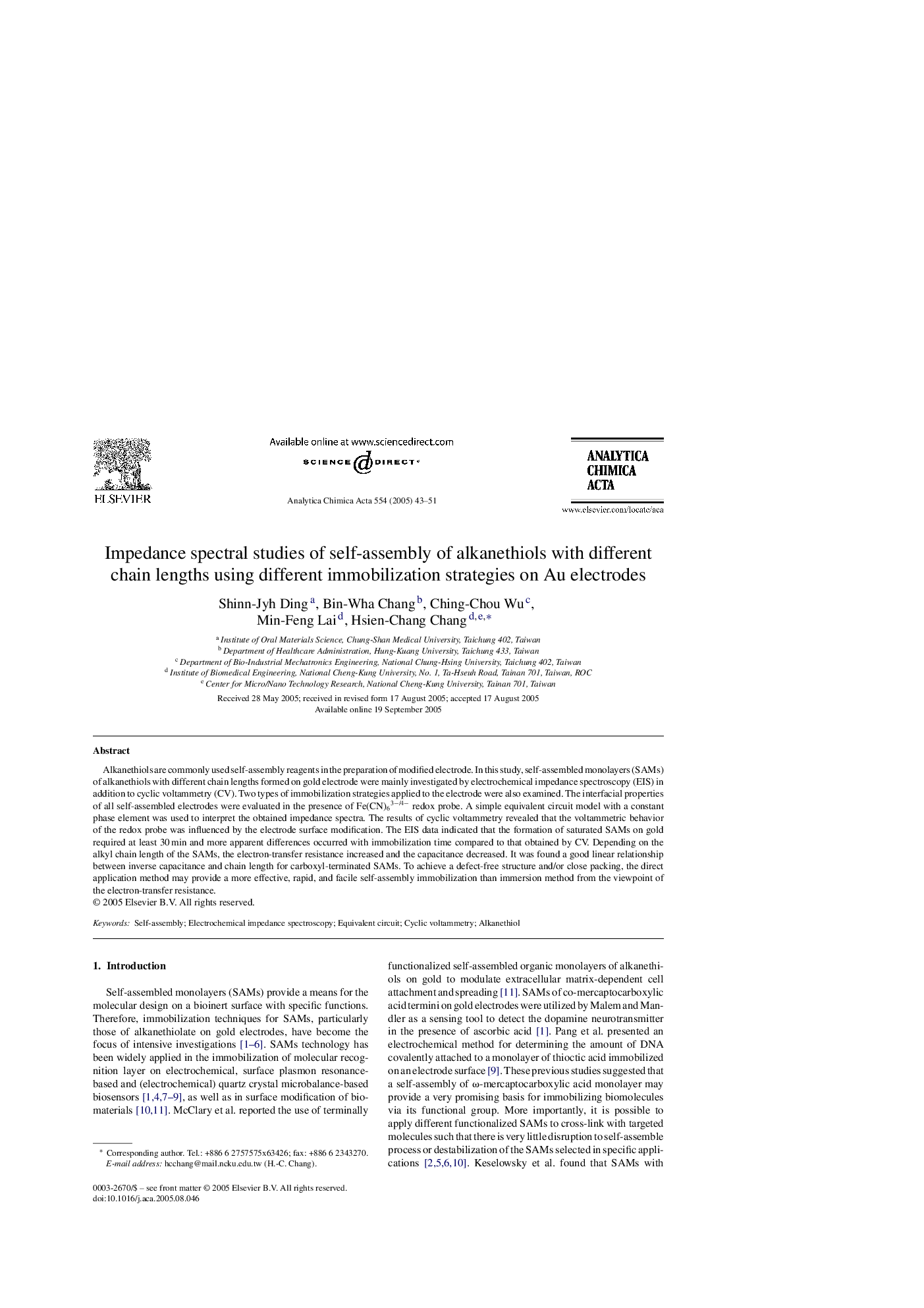| Article ID | Journal | Published Year | Pages | File Type |
|---|---|---|---|---|
| 9743287 | Analytica Chimica Acta | 2005 | 9 Pages |
Abstract
Alkanethiols are commonly used self-assembly reagents in the preparation of modified electrode. In this study, self-assembled monolayers (SAMs) of alkanethiols with different chain lengths formed on gold electrode were mainly investigated by electrochemical impedance spectroscopy (EIS) in addition to cyclic voltammetry (CV). Two types of immobilization strategies applied to the electrode were also examined. The interfacial properties of all self-assembled electrodes were evaluated in the presence of Fe(CN)63â/4â redox probe. A simple equivalent circuit model with a constant phase element was used to interpret the obtained impedance spectra. The results of cyclic voltammetry revealed that the voltammetric behavior of the redox probe was influenced by the electrode surface modification. The EIS data indicated that the formation of saturated SAMs on gold required at least 30Â min and more apparent differences occurred with immobilization time compared to that obtained by CV. Depending on the alkyl chain length of the SAMs, the electron-transfer resistance increased and the capacitance decreased. It was found a good linear relationship between inverse capacitance and chain length for carboxyl-terminated SAMs. To achieve a defect-free structure and/or close packing, the direct application method may provide a more effective, rapid, and facile self-assembly immobilization than immersion method from the viewpoint of the electron-transfer resistance.
Keywords
Related Topics
Physical Sciences and Engineering
Chemistry
Analytical Chemistry
Authors
Shinn-Jyh Ding, Bin-Wha Chang, Ching-Chou Wu, Min-Feng Lai, Hsien-Chang Chang,
